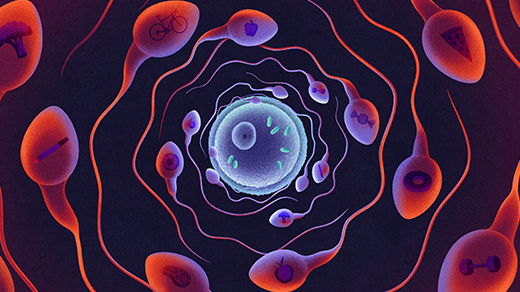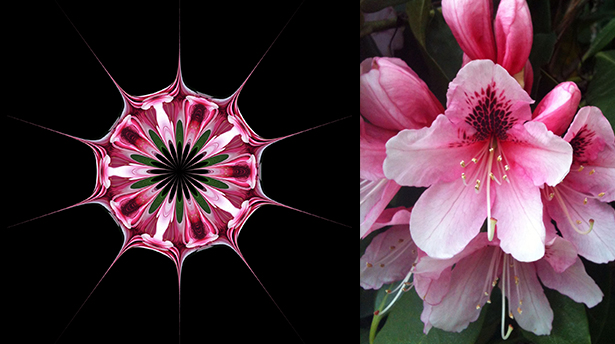Introduction
Until one or two billion years ago, life on Earth was limited to a soup of single-celled creatures. Then one fateful day, a lonely cell surrendered solitude for communal living. It developed a chance mutation that made its progeny stick together, eventually giving rise to the first multicellular life.
With that simple innovation, a world of possibilities burst open. These new organisms were too big to be eaten, and their mammoth size allowed them to pull in more food from the environment. Most important, individual cells within the bunch could begin to specialize, taking on new functions, such as hunting, eating and defense. The transition to multicellularity was so successful that it happened over and over again in Earth’s evolutionary history — at least 25 times, and very likely more.
Multicellularity has clear advantages — just look at the menagerie of form and function among animals, plants and fungi. But scientists have long been puzzled as to how this transformation took place. A true multicellular organism acts as a unit, meaning that each cell must surrender its will to survive as an individual and act to ensure the survival of the larger group. “The problem with all the major evolutionary transitions is how Darwinian entities relinquish their individual fitness and become part of a higher-level unit,” said Richard Michod, an evolutionary biologist at the University of Arizona in Tucson.
Scientists are gaining insight into the process by re-creating the evolution of multicellularity in the lab. Using an approach known as experimental evolution, they prod single-celled microbes, such as yeast, algae or bacteria, to develop a multicell form.
Will Ratcliff
Video: Snowflake yeast reproduce by releasing daughter clumps. Like most multicellular organisms, each member of the daughter clump descends from a single cell.
“It’s easy to think of [these major transitions] as a giant leap in evolution, and in some sense that’s true,” said Ben Kerr, a biologist at the University of Washington in Seattle and one of the researchers studying major transitions in evolution. But each transition actually involved a series of small advances — the organisms had to evolve effective ways to stick together, to cooperate, to divide and to develop specialized jobs within the greater whole. “We’re trying to do the opposite of a giant leap. We’re trying to break one giant leap for evolution into an understandable series of small steps.”
William Ratcliff, a biologist at the Georgia Institute of Technology in Atlanta, and his collaborators have discovered a surprisingly simple route to multicellularity: a single mutation in yeast that adheres the mother cell to its daughter to create a snowflake-like shape. These snowflakes grow and divide in a way that provides a clever solution to one of the major pitfalls of multicellularity: the cheater problem, in which lazy cells take advantage of cooperative ones. And while the work hasn’t produced a true multicellular organism, the snowflake yeast has shown just how easy it can be for life to take the first step toward a major biological transformation.
Falling Snow
Ratcliff began his quest for multicellularity while still a graduate student at the University of Minnesota. Over a series of coffee-fueled conversations, Ratcliff and his collaborator Michael Travisano began brainstorming the “coolest experiment we could do,” according to Ratcliff. Tackling the biggest unsolved question in biology — how life first began — was too far out of their wheelhouse, the pair decided. So they settled on the runner-up: How did multicellular creatures evolve? To untangle that transition, the researchers would try to re-create it, converting single-celled yeast into multicellular organisms.
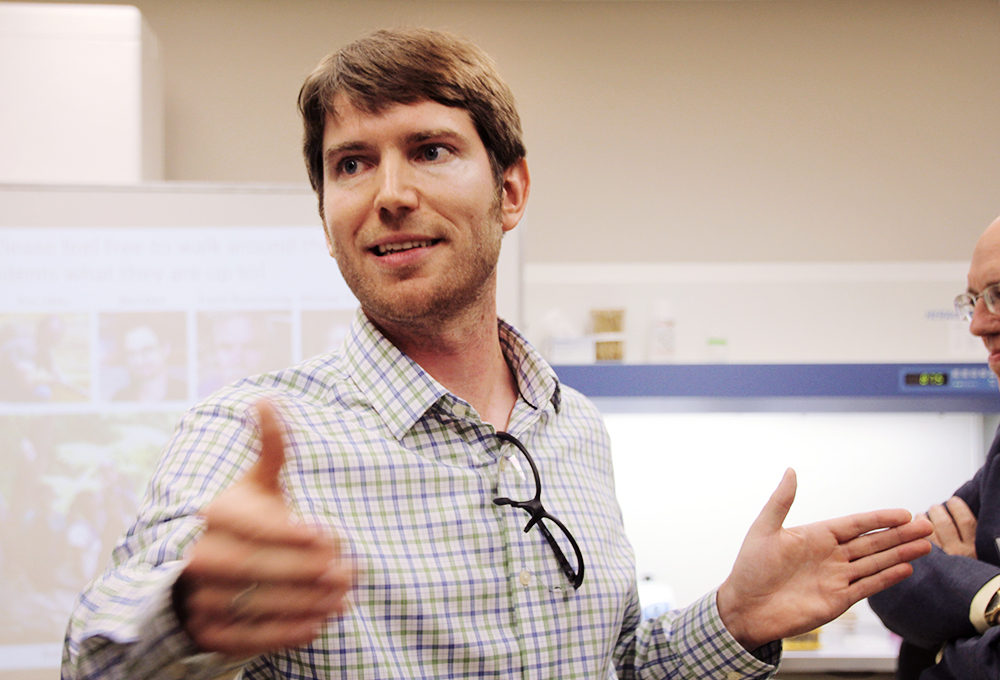
Ratcliff and Travisano developed an easy way to force yeast to become multicellular. They grew the microbes in tubes and spun them in a centrifuge once a day. The largest cells or those that clustered together sank the fastest. Each day, they selected the fastest sinkers, challenging those cells to another round of the experiment. Over the course of 24 hours — roughly seven generations of yeast — the cells accumulated tens of thousands of mutations.
Then, a couple of weeks into the experiment, the composition of a few of the tubes suddenly changed. The cells began forming large clusters, and the silky solution of single cells transformed into grainy blobs. Within 100 yeast generations — about two weeks — the population had shifted almost entirely to snowflake yeast.
“I was gobsmacked,” Ratcliff said. “It was unusual, fast and dramatic.” Peering at the solution under the microscope revealed that single cells were now in the minority. “We mostly saw these beautiful spherical branched things.”
While typical yeast divides and disperses after each generation, snowflake cells divide and stick. Daughter cells cling to their mother like baby kangaroos. Mother and daughters then divide again and again, each producing another attached offspring.
The evolution of snowflake yeast created more than a mere clump of cells. Wild yeast strains sometimes produce a sticky protein on their surface, which makes the cells adhere to each other. Brewers like this sticky form, known as floc yeast, because it’s easier to remove it from newly brewed beer.
But snowflake yeast is quite different from flocs. Floc yeast cells divide and separate, then condense into a genetically diverse pile. Snowflake yeast grows in highly related clumps. It’s this difference that Ratcliff and others say distinguishes a simple blob of cells from a cohesive unit capable of evolving true multicellularity.
Whether snowflake yeast qualifies as truly multicellular or not is a difficult question to answer. There’s no clear dividing line between single-celled and multicellular organisms. Ratcliff likens the transition to what he calls the rich man, poor man problem. If you gathered everyone in the United States and lined them up according to wealth, the richest people would land at one end and the poorest at the other. If you just looked at these extreme ends of the spectrum, it would be easy to define the characteristics of the rich and the poor. But if you drove down the line of people, it would be impossible to define a strict point where the rich group ended and the poor group began. By this analogy, snowflake yeast is in the multicellular middle class.
The Nature of Individuality
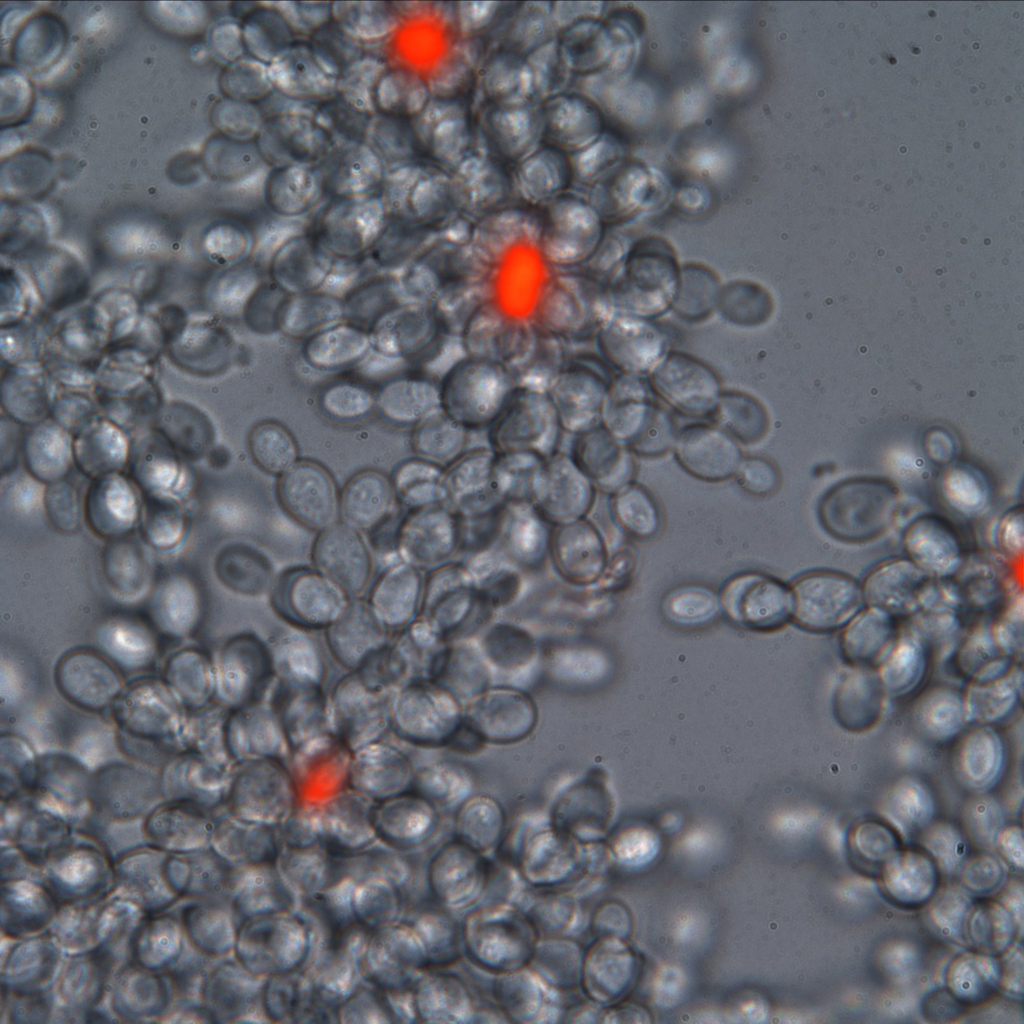
Around Christmas six years ago, Ratcliff slid a photo of his snowflake yeast under the door of a historian colleague who studies the nature of individuality and asked him to identify the individuals: Were they the single cells that made up the snowflakes, or the snowflakes themselves? The historian drew Santa hats on the snowflakes, a tongue-in-cheek method of choosing the multicellular entities.
Ratcliff was trying to get at the question of how to define an individual, one of those superficially simple questions that are actually quite complex. And while biologists don’t agree on the exact qualifications that designate an individual, they do have a broad set of guidelines. Snowflake yeast satisfies a number of important requirements.
First, individual cells within a snowflake appear to sacrifice themselves to benefit the whole. When snowflake yeast reaches a certain size, cells within the clump commit suicide, releasing smaller daughter clumps from the parent cluster. “It’s deeply poetic: The death of individual cells seems to be a direct contributor to the birth of new multicellular organisms,” Kerr said. The process illustrates the beginnings of a division of labor within the organism. Individual cells have distinct roles to play, even if their role is simply to die. “It’s not in the interest of the individual cell — it’s shifted interest to a higher level.”
Snowflake yeast also mirrors the genetic bottleneck that we all go through. Every one of us began as a single cell, a fertilized egg that produced the complex layers of tissue that make up our bodies. Each daughter branch in snowflake yeast is composed of cells that originated from the same parent cell. In both cases, the resulting block of cells is genetically identical, or nearly so.
That homogeneity is essential for blocking the spread of cheater cells, the single-celled equivalents of lazy roommates who eat everyone’s food but never go shopping or pay the bills. Cheater microbes steal resources from their neighbors and devote all their energy to reproduction, rapidly outnumbering the more industrious cells. (Cancer is an example of cheaters within our own bodies — genetically distinct cells that act in their own best interest, endangering the larger entity.)
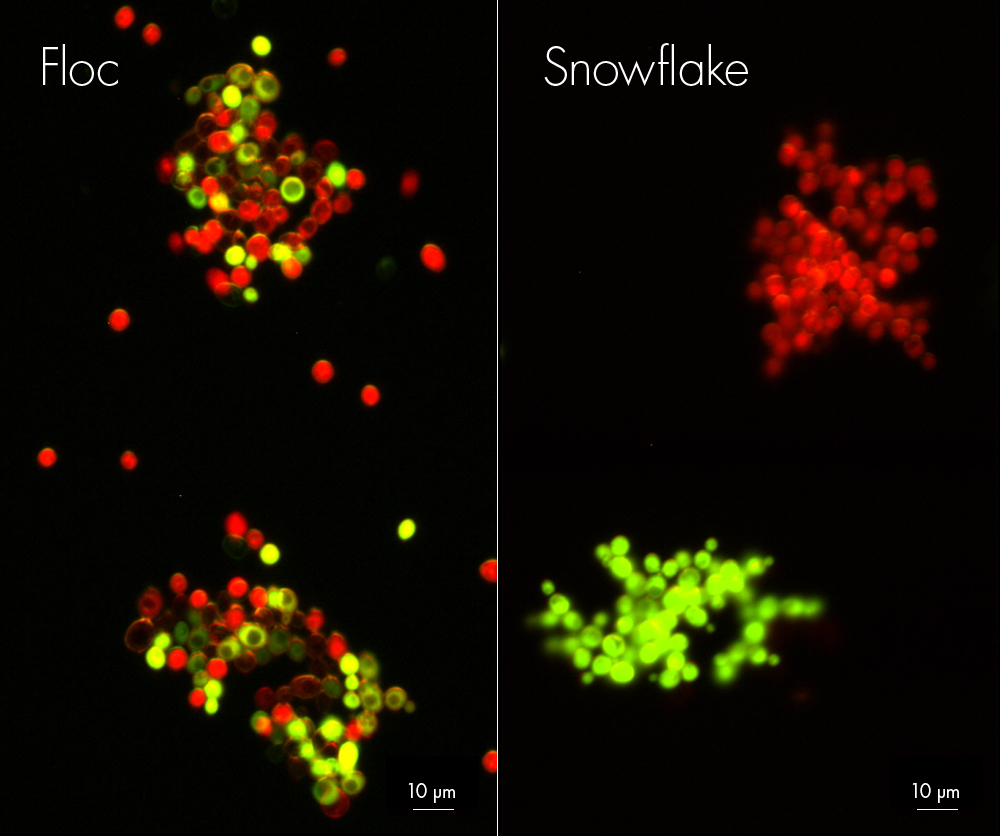
In snowflake yeast, the single-cell bottleneck means that cheater cells are stuck with a community of cheaters. The group won’t be able to survive on its own. “The simplest and most general explanation for why multicellular organisms pass through a single-cell stage is to ensure that all the cells composing the organism are as close to perfectly related to each other as they could be,” said Rick Grosberg, an evolutionary biologist at the University of California, Davis. “Everyone shares the same genetic interests.” The bottleneck forces an alliance.
Perhaps the most important argument in favor of snowflake yeast’s status as a multicellular creature is that natural selection is acting on the snowflake as a whole. In a new set of experiments, Ratcliff’s team is pitting snowflake yeast against floc yeast in a head-to-head battle. Preliminary results show that over and over again, snowflakes drive flocs to extinction. “They are evolving in the same way that multicellular organisms are,” Ratcliff said. “Selection acts on groups and the groups respond to selection.”
Yet snowflake yeast fails one key test of multicellularity: indivisibility. “We can’t be chopped into smaller parts and maintain the properties of the whole,” Michod said. Snowflake yeast can. Because of this, “I think snowflake yeast are not really true multicellular organisms,” Michod said. “But they are certainly on their way.”
Accelerated Evolution
The snowflake yeast strains have now been evolving for more than a year, and they continue to change, getting bigger and rounder with each generation and sinking faster than their ancestors. “We can see these Darwinian processes playing out in the lab over thousands of generations,” Ratcliff said.
The ongoing transition is giving researchers a powerful tool for studying the genetic foundations of multicellularity. Ratcliff has already identified one of the genetic mutations that make it possible for snowflake yeast cells to stick together in their particular way. He hopes to identify additional mutations involved in the switch to multicellularity, which will illuminate the mechanisms underlying the process. Even though snowflake yeast might not directly reveal how multicellularity first evolved on Earth, it should highlight the general evolutionary processes needed to get there. The fact that basic multicellularity is so easy to create is “a profound insight if not a complete insight,” Grosberg said.
What’s more, lab-evolved multicellularity isn’t limited to yeast. Scientists can drive other single-celled organisms to multicellularity as well. Ratcliff and collaborators Matthew Herron and Frank Rosenzweig, both biologists at the University of Montana in Missoula, showed that they can transform the single-celled alga Chlamydomonas reinhardtii into a multicellular entity. This is particularly important because one of the criticisms of Ratcliff’s yeast work is that some natural yeasts have multicellular forms, meaning that his experiments might simply be restoring a latent talent.
The researchers ran similar experiments to those in yeast, selecting for cells that sink the fastest. But they also employed a selective pressure that algae are more likely to experience in nature: predators, such as paramecia, that can’t eat larger multicellular blobs. The predator-driven strains developed a different sort of multicellularity from the gravity-induced versions. These multicellular Chlamydomonas have spherical blobs of cells contained within the same cell wall.
It’s not so surprising that algae came up with different routes to multicellularity. The transformation evolved independently in plants, animals and fungi dozens of times, maybe more. So there are likely different solutions to the problem of making the transition. “What are the suite of possible genetic keys that unlock the door to multicellularity?” Rosenzweig said. “That’s one thing to be gained by comparing different systems.”
Researchers also want to know how these clusters become more complex, partitioning jobs like a well-run factory. “How does a multicellular organism make that next great leap to differentiated cell types that work cooperatively in the organism?” Rosenzweig said.
Rosenzweig cites an ongoing experiment in his lab with Chlamydomonas. Single-celled algae have flagella, taillike appendages that propel the cell toward light. The multicellular versions of Chlamydomonas also have flagella, but theirs are trapped and useless inside the larger cell wall. “It’s like being in a lifeboat and having your oars stuck in the air, not the water,” Rosenzweig said. To use their flagella, Chlamydomonas will have to evolve ways to get them in the right place and to coordinate their movement.
Ratcliff hopes his snowflake yeast will eventually develop this kind of complexity. Perhaps the mechanism that drives cell suicide will evolve a more sophisticated function. Perhaps, given enough time, the new multicellular forms will evolve even more surprising capabilities, just as the transition to multicellularity billions of years ago ushered in a world of large and complex life. “One of the reasons the research is so interesting is that it describes the beginning of a bona fide major transition in real time,” Kerr said.
This article was reprinted on Wired.com.
